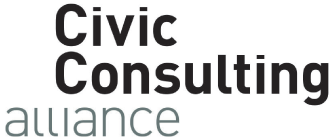
Insights from Global Transformation in Global Organizations
Over three decades we have worked on organizational transformation – the quest for significant, qualitative increases in performance – in global businesses of all kinds. While we have seen significant, positive change in our clients, we have at the same time seen broad changes in the world around that concern us. Changes like accelerating concentration of wealth along with deepening pockets of isolation and exclusion among populations in many countries, both developed and developing. A sense of disconnection and uncertain purpose at all levels of society. A challenge of leadership – both on the part of leaders, who feel less able to connect with those being led, and on the part of ordinary citizens, who have less trust overall in formal leaders and leadership structures.
These patterns – unintended outcomes, a sense of disconnection, frustration among leaders and lack of trust between leaders and those being led – are almost identical to what we find in organizations we try to help. From our work over the last three decades we have learned two things in particular about undertaking transformative processes.
First lesson: humans first. Every organization is made up of people. Applying a mechanical perspective of organizations has led us to command the hands of employees. This does not work as we desire to engage the hearts and minds of the people in our organizations.
Rather, working on transforming organizations, we have found it necessary to work inside-out. Simply put, connecting with the hearts and minds of individual human beings is the key to delivering amazing and inspiring results. When people reach deep inside themselves, they access a place of identity and purpose. This shifts the individual's energy and approach fundamentally towards a desire to accomplish.
When people connect with themselves they are able to connect with others in different and more meaningful ways. It becomes easier to build trust, establish true solidarity, or even act in unity. In turn, such unity leads to profound performance shifts: Rather than incremental improvement, we’ve seen 2x-5x improvements when we start inside-out.
Moreover, and even more inspiring, is the associated rise in human dignity, fulfillment and joy that surfaces in groups. As Gallup has found in their research of American employees that only 15% of them feels engaged. There are clear indications of the upside potential that looms in our organizations and, by implication, society in general and American society in particular.
Second lesson: leaders transform first. We have found that the depth of transformation in leadership teams sets not only the bar but also the boundaries for the transformation of people beyond it.
We apply the inside-out principle to leaders and help leaders connect with their deepest desire and sense of purpose. Then comes the toughest step. We ask leaders to take ownership of the crucial issues and impediments in their organization. “How am I contributing to the current issues?” Unless everyone realizes their own contribution to the problems, it is hard for them be a source for the solution. Then we connect this insight to their personal life stories and needs. From this, transformation becomes more powerful, fulfilling, and inspiring.
Implications for societal transformation
The upside potential in civic leadership is greater than in corporations for three reasons. First, due to the inherent human value of the goals, there are richer possibilities for initiating and enhancing meaningful work that contributes to society and personal meaning. Secondly, structures in society are less limiting for people to establish new collaborations compared to more formal corporate structures. Finally, while people in corporations are generally at full capacity, this is not true in society where whole groups, at all levels, feel they cannot plug in and are, in many ways, isolated from moving a region forward. Removing the barriers for everyone’s involvement will grow our capacity for societal enhancement.
Recently, we worked with CCA on creating an approach that would apply these lessons to the challenges CCA sees in Chicago. We have coalesced around four building blocks that resonated with the leaders and change agents we met with while in Chicago.
Building Blocks for a New Approach to Leadership and Leadership Structures in Chicago
Building on its rich history, what will increase the effectiveness and distinctiveness of Chicago’s Civic Leadership? We believe the next level of civic leadership can be built on four imperatives:
1. Build ‘Communities of Purpose.’ Rather than sending leaders to isolated training programs and returning them to an unchanged environment, a revised approach to civic leadership would involve explicitly developing communities of purpose across all sectors. Leaders and others would grow and develop in these communities while they realize tangible results together for the region. At the same time, these communities would form examples of new cultures that will inspire others to initiate meaningful change themselves.
2. Enlist Current Power Structure. Rather than taking distrust of elites for granted, current power structures would be included consciously in communities of purpose. It is the human connections between communities that do not today exist and must be nourished, and this can only happen if connections are made across the greatest divides.
3. Assume personal transformation and ownership. For any human organization to transform, its members must also undergo personal change. This process starts with every human being and originates deep in his or her core. The initiating leaders will have to be the first ones to dive into the deep end of the pool. The process also requires individuals to take personal ownership of the problems and opportunities before developing solutions. The concept of ownership for the causes is clearer cut in an organization a leader directly runs, and is often the toughest hurdle to cross. A key distinction is that ownership is not about guilt and not always about conscious action, but more about responsibility and opportunities for growth.
4. Scale. Size matters. How many people must be involved for how many years to substantively impact leadership structures and the trajectory of Chicago? We don’t know, but practically, to have a substantial impact on the trajectory of a region with more than five million people, we need to challenge ourselves to develop approaches that involve thousands, eventually tens of thousands, as we move towards a tipping point where the structure, nature, and impact of leadership is qualitatively different.
What resonates in these thoughts? What doesn’t? How should we get started? Please share your thoughts and ideas with us by email to Brian, Rasmus, Meredith, or Mark. You can also engage with us on Twitter.

